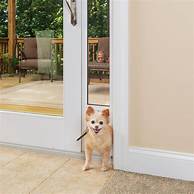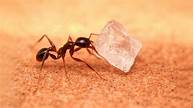Are Pet Doors Safe?
Pet doors can be a great convenience for pet owners, allowing their furry friends to come and go as they please. However, some people worry about the safety of pet doors, wondering if they could pose a security risk or allow unwanted pests into the home. In this article, we'll explore the safety of pet doors and provide tips on how to choose and install one safely.

Security
One of the primary concerns about pet doors is whether they can compromise a home's security. While it's true that a pet door can potentially provide an entry point for intruders, there are several things you can do to minimize this risk:
1. Choose a secure pet door: Look for a pet door that is made of durable materials and features a locking mechanism. Avoid pet doors that are made of flimsy materials or that do not have a locking mechanism.
2. Install the pet door correctly: Make sure the pet door is installed properly according to the manufacturer's instructions. A poorly installed pet door can create a weak point in your home's security.
3. Keep the pet door locked when you're not home: Even if you have a secure pet door, it's a good idea to keep it locked when you're not home. This will help to deter intruders from trying to enter your home through the pet door.
Pests
Another concern about pet doors is that they could allow unwanted pests into the home. While this is a possibility, there are several things you can do to reduce the risk:
1. Choose a pet door that has a flap: A pet door with a flap will help to keep pests out of your home. Make sure the flap is made of a durable material that is difficult for pests to chew through.
2. Install the pet door at least 12 inches above the ground: This will help to prevent pests from being able to reach the pet door from the ground.
3. Keep the area around the pet door clean: Make sure to sweep and vacuum the area around the pet door regularly to remove any food or debris that could attract pests.
Additional Tips
Here are a few additional tips for safely using a pet door:
1. Introduce your pet to the pet door slowly: Some pets may be hesitant to use a pet door at first. Be patient and introduce your pet to the pet door gradually. You can start by placing treats or toys on the other side of the pet door to encourage your pet to use it.
2. Train your pet to use the pet door properly: Once your pet is comfortable using the pet door, train them to use it properly. This includes teaching them to open and close the pet door gently and to stay inside the house when the pet door is closed.
3. Inspect the pet door regularly: Make sure to inspect the pet door regularly for any signs of damage. Repair or replace any damaged parts immediately.
By following these tips, you can help to ensure that your pet door is safe for your pet and your home.
Declaration: All article resources on this website, unless otherwise specified or labeled, are collected from online resources. If the content on this website infringes on the legitimate rights and interests of the original author, you can contact this website to delete it.





